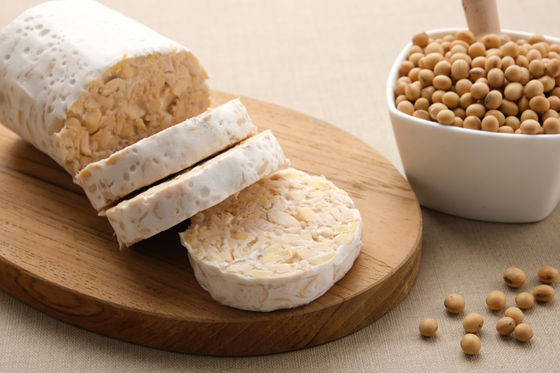Study reveals the best meat alternatives for your health, wallet and the environment

The livestock industry, especially beef production,
A multicriteria analysis of meat and milk alternatives from nutritional, health, environmental, and cost perspectives | PNAS
https://www.pnas.org/doi/10.1073/pnas.2319010121
The best and worst meat replacements for your health, your wallet and the planet – new research
https://theconversation.com/the-best-and-worst-meat-replacements-for-your-health-your-wallet-and-the-planet-new-research-245089
In his study, published in the Proceedings of the National Academy of Sciences (PNAS) on December 2, 2024, Springman quantified and compared the health and environmental impacts and costs of 24 types of foods, including meat, dairy products, soy, tempeh , and meat alternatives.
Research Methods
First, the nutrients were evaluated based on 29 categories in total: six major nutrients (calories, protein, fat, carbohydrates, sugar, and fiber), five fats (saturated fat, monounsaturated fatty acids, polyunsaturated fatty acids, trans fat, and cholesterol), nine minerals (calcium, iron, heme iron, magnesium, phosphorus or phytic acid, potassium, sodium, zinc, and copper), and nine vitamins (vitamin C, thiamin, riboflavin, niacin, pantothenic acid, vitamin B6, folic acid, vitamin B12, and vitamin A).
The study also looked at the health effects of high intakes of polyunsaturated fatty acids, fiber, and potassium, and low intakes of cholesterol, sodium, and heme iron, which are closely associated with the incidence and mortality of chronic diseases.

Environmental impacts were assessed through
In addition, the costs were calculated by combining the selling prices at UK online supermarkets with international market prices and adjusting them for the Consumer Price Index (CPI) and Purchasing Power Parity (PPP) published by the Organisation for Economic Cooperation and Development (OECD).
◆Beans win by a landslide
The results of the analysis are as follows. From the left, they show the overall rating, health rating, environmental rating, and cost rating. First, traditional unprocessed plant-based foods such as soybeans, peas, and other beans scored 93 to 97 out of a possible 100, far surpassing other foods and performing best in almost every aspect.

Soybeans were the best in terms of nutritional value and cost, while peas were the best in terms of reducing mortality risk and greenhouse gas emissions, Springman said.
Springman suggested ways to incorporate beans into your diet include making bean-rich dishes like

◆ Plant-based processed foods came in second place
The next best performers after beans were processed plant-based foods like veggie burgers and plant-based milk, which offer useful options for people looking for alternatives to meat and dairy.
However, their effect on reducing greenhouse gas emissions and their contribution to health are only one-fifth to one-third of those of unprocessed beans, and their cost is 10% higher than traditional ingredients. There is a slight price to pay for their ease of use in terms of taste and ease of use in cooking.
Specifically, the tempeh received a score of 82 out of 100, the veggie burger and veggie sausage received a score of 74 and 70 respectively, the tofu received a score of 62 and the veggie bacon received a score of 46.

◆Last place is cultured meat
As expected, meats such as chicken, pork and processed meats received low scores ranging from 46 to 59 points, with beef in particular receiving a score of 13, the worst performance in the areas of health impact, greenhouse gas emissions, land use and water use.
And cultured meat, which is produced by culturing animal cells, is subject to even stricter scrutiny than real animal meat.

Since it is still largely unavailable on the market, it was not included in the above analysis, but Springman said that the greenhouse gas emissions of cultured meat produced using current technology are comparable to those of a beef burger, but the production costs are a whopping 40,000 times higher. If beef is cultured, the nutritional value will be the same as beef, so there are also health issues.
More efficient production processes could reduce costs and greenhouse gas emissions, but that would require significant investment and technological advances, Springmann said.
Another study published in 2023 found similar results.
Laboratory-grown 'cultured meat' turns out to be up to 25 times worse for the environment than real beef, and there are challenges with low-cost, low-energy cultivation technology - GIGAZINE

Summary
This study reaffirms that soybeans and other legumes, which have long been valued as 'meat from the field,' are excellent meat substitutes, but it does not mean that you can simply replace meat in your diet with beans.
For example, replacing meat with soy may improve overall nutritional value, but it may result in deficiencies in certain nutrients, such as vitamin B12, that are commonly lacking in a diet based on plant foods.
Additionally, suddenly replacing meat and dairy with certain foods can put strain on agricultural practices in the regions where those foods are produced, potentially damaging natural resources and biodiversity.
'By diversifying our diets and finding a balance between nutritional, environmental and cost benefits, we can address the problem of over-reliance on certain foods,' Springman wrote in the paper.
Related Posts:






